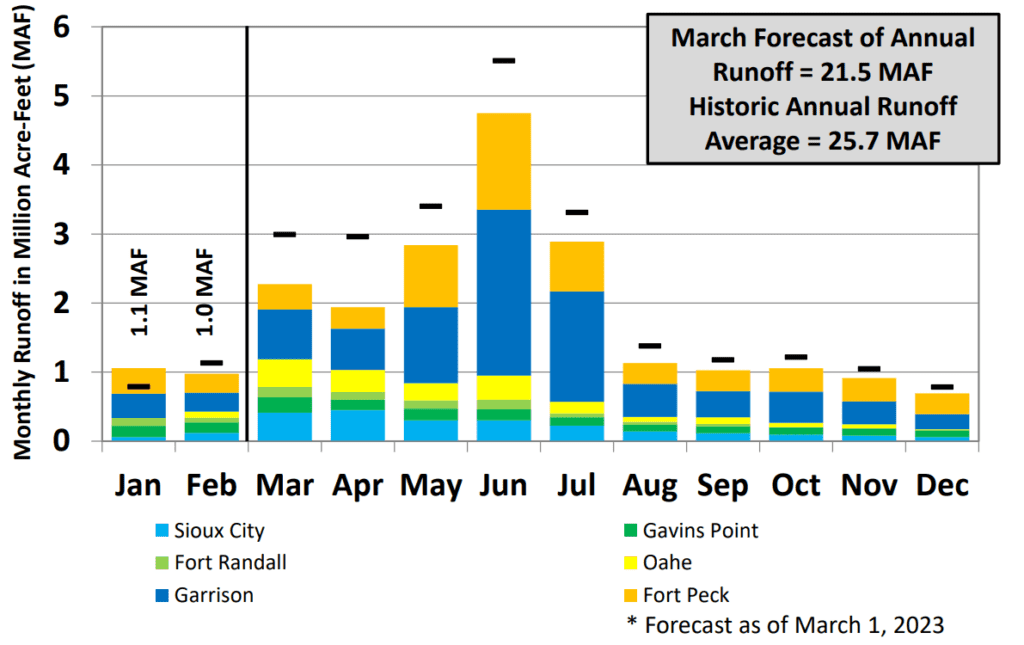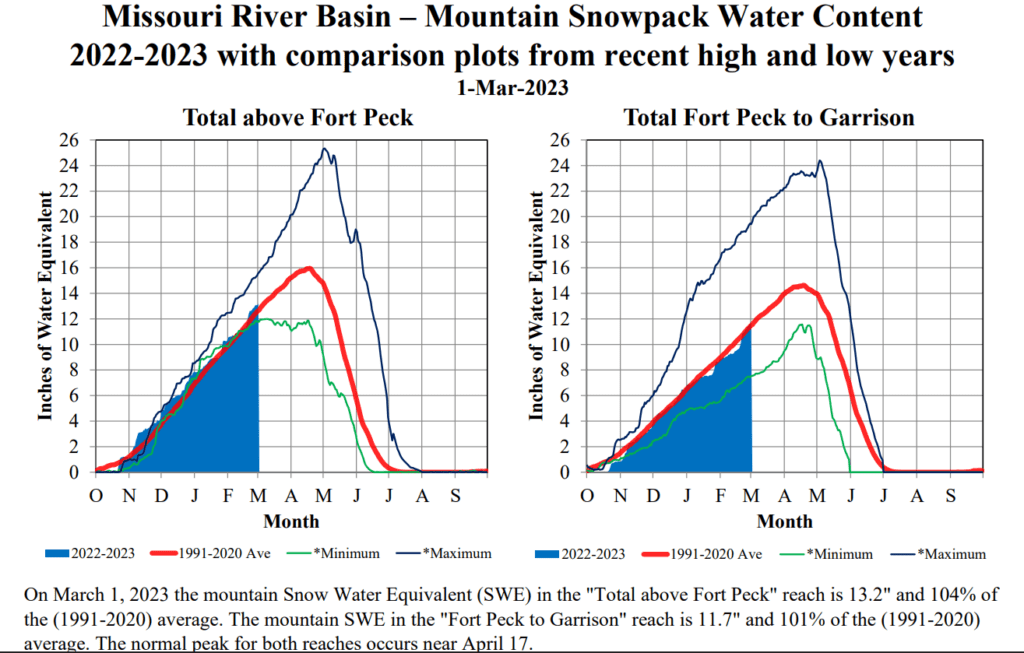

RIVERDALE – The March forecast of annual spring runoff into the Missouri River Basin has increased from a month earlier.
The U.S. Army Corps of Engineers now projects runoff to be 21.5-million-acre feet of water. That compares to 21.1 MAF in the February outlook. The historic average is 25.7 MAF.
The increased forecast can be attributed to a series of snow events in recent weeks throughout the drainage system. However, mountain snowpack, primarily in western Montana, and snowpack water content is tracking remarkably close to the long-term average. Nevertheless, concludes the Corps, early runoff expectations are 84% of normal.
Of concern to many North Dakota interests is what effect the anticipated runoff will have on sprawling Lake Sakakawea, the state’s largest body of water that is fed by the Missouri and Yellowstone Rivers as well as localized runoff. The increase in the latest projection means a slight change in the forecasted high elevation for Sakakawea. The February outlook anticipated a July peak of 1,831.9 feet for Sakakawea. The new forecast projects a high elevation of 1,832.6 feet in July, considered a near normal operating level. Lake Sakakawea stood at 1,825.4 feet Friday.

Peak snowfall accumulation usually occurs about mid-April, meaning there is ample time for conditions to change. A number of factors affect the amount of spring runoff, including snowpack, rainfall, condition of the soil throughout the drainage, and the speed of the melt.